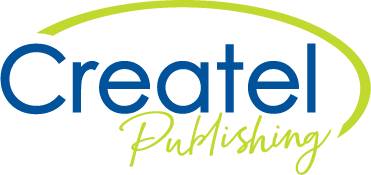Hope in the Age of Cynicism: Building Our Future One Choice at a Time
Is it just me or have you noticed an undercurrent of cynicism, and even an apathy about the future, in our culture today?
It’s almost an underlying feature of the media we consume. Between the 24-hour news cycle, which constantly exposes us to the impacts of war, poverty and injustice, and even the lack of uplifting stories, it’s hard to escape a feeling of gloom.
Feel-good movies have become rare. Many films are now written with jokes that are both self-aware and nihilistic. Instead of being lost in a good story, we are frequently pulled out of the narrative and shown the issues in our own world, which are often framed as problems far bigger than ourselves.
Where we once had many people we could look up to and respect, social media now holds a magnifying glass to those around us, making their flaws more visible than ever, without the genuine connection that allows for understanding, growth, or even the chance to hear a sincere apology.
Is it any wonder that many of us, including our students, can become overwhelmed, paralysed and react with apathy? Even more so, is it a surprise that 1 in 5 Australians suffer with mental health issues such as anxiety and depression?
If it is not blatantly apparent; we need hope.
A large aspect of hope is cultivating an optimism about the future. It may be that with all the information we are receiving, the future seems more and more uncertain and improbable. But the truth is: the future has always been uncertain. Throughout history, humanity has seen events that were deemed to signal the “end of the world”, both figuratively and literally: The Ice Age, The Great Depression, World War I and II, The Black Death, The Dark Ages, and countless other crises. Yet time and time again, we have emerged on the other side. Despite bad decisions and unstoppable events, humanity remains resilient. But does being hopeful just make us more naïve and unable to see the world for what it is?
In his book Hope For Cynics: the surprising science of human goodness, psychology professor Jamil Zaki explains that the practice of hope has nothing to do with putting on rose-coloured glasses to see the world. Instead, it is about taking off our “mud-coloured glasses”. According to the research outlined in Zaki’s book, our perceptions of the world are often mismatched to what the world actually is. In fact, most people are much more compassionate, kind and helpful than we see perceive them to be.
Even on a global level, there is still hope. Dr. Jane Goodall, who won the Templeton Prize for her groundbreaking research on chimpanzees in Tanzania, has not given up hope for the planet. In her work she has seen the devastation caused by the human impact on the environment, yet she makes a strong case for hope, saying:
Hope is often misunderstood. People tend to think that it is simply passive wishful thinking: I hope something will happen but I’m not going to do anything about it. This is indeed the opposite of real hope, which requires action and engagement
Her work highlights that all it takes for positive change is a small group of people who put in the work. Even just a few small actions can compound and make a real difference.
Shifting from a collective hope, it’s equally important to foster hope on an individual level. Hope for an individual can be described as having the ability to find various pathways to reach a future goal, as well as believing in our ability to do so. A growing body of research shows that hope is one of the biggest catalysts for wellbeing. It can even impact our health and quality of life. Hopeful students have better academic outcomes, hopeful adults reported better life satisfaction and fewer physical health problems such as chronic conditions and sleep problems, and hopeful athletes have a higher chance of success beyond other factors such as academic scores, confidence, and ability.
Rather than seeing hope as wishful thinking, we should approach it as a skill that needs practice and repetition. In a practical sense, we should:
• believe in our ability to be resilient, resourceful, and capable of overcoming challenges even when the path ahead is uncertain
• commit to small, positive changes that help shape the world we want
• stay active and engaged in our progress towards our goals
• look for the good in the world, even when our biases make it hard to see
Author Fyodor Dostoevsky wrote, “To live without hope is to cease to live.” He was right. Cynicism and apathy often rob us of our goals, both individually and collectively. The challenge is to resist falling into despair, even when we clearly see the faults of the world. The choice is ours: if cynicism asks nothing of us, and hope demands everything, which one will we choose to follow?
This article is part of the Building Character and Resilience Program. To request more information fill out our form!

Leave a Reply